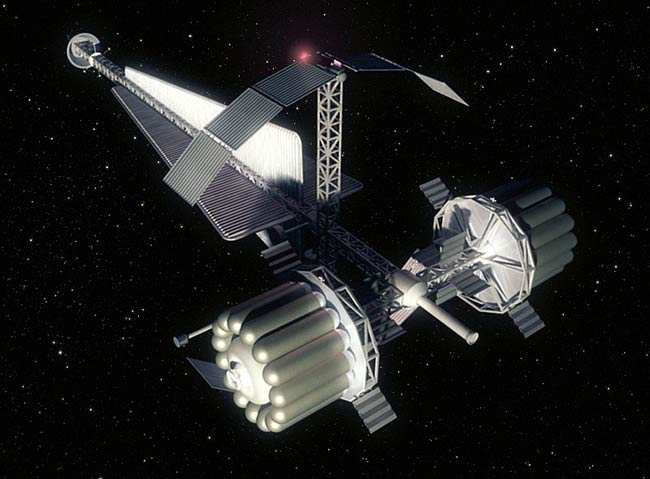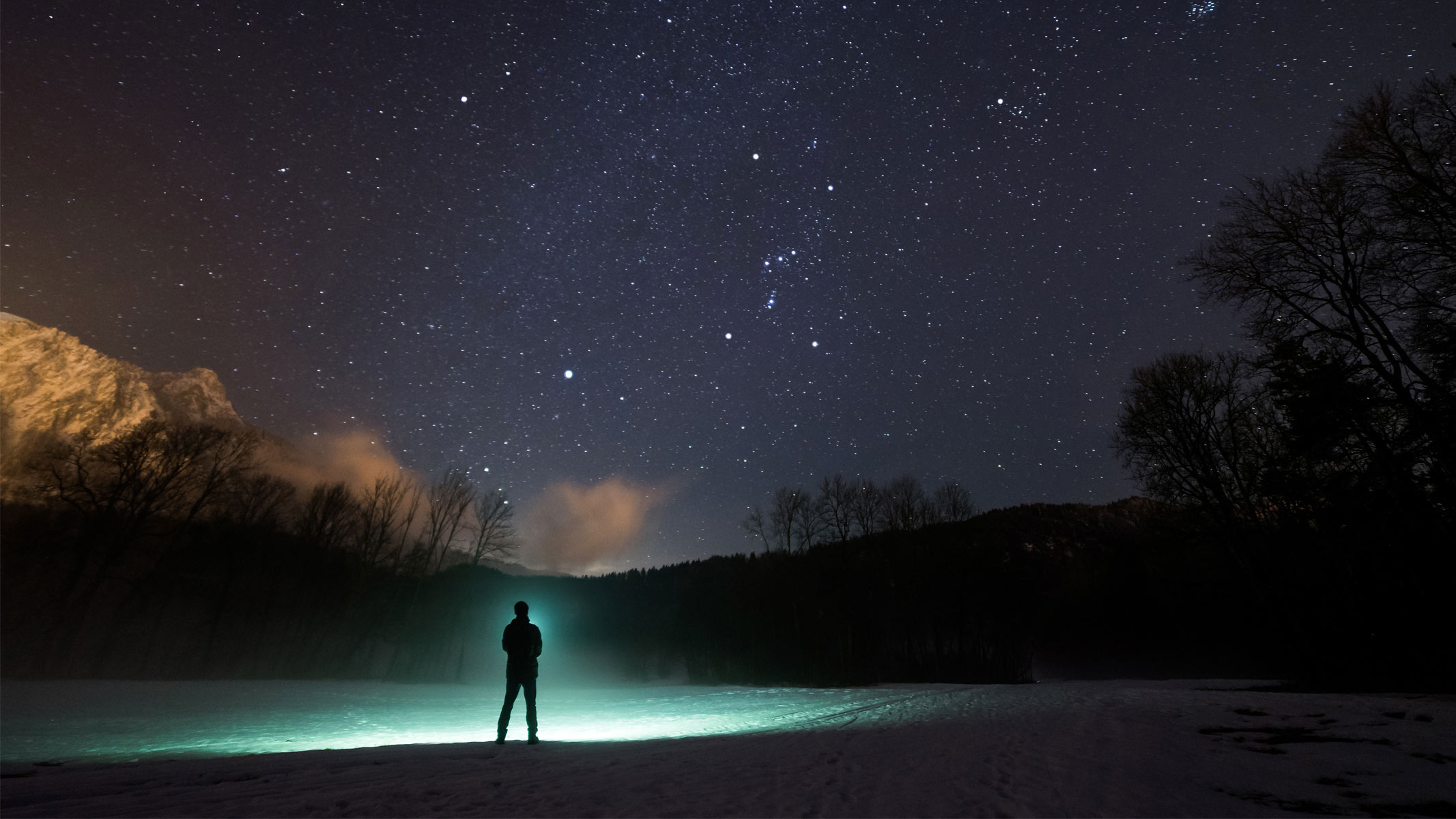Incredible Technology: How Astronauts Could Hibernate On Mars Voyage


Editor's Note: In this weekly series, SPACE.com explores how technology drives space exploration and discovery.
By the time humanity is ready to put boots on Mars, the long cruise to the Red Planet may be as easy as a dream.
NASA-funded scientists are investigating ways to induce a hibernation state in astronauts. The work could help bring manned Mars missions closer to reality by making the journey to the Red Planet cheaper, safer and less taxing for crewmembers both psychologically and emotionally, researchers said.
"Every year, it's, 'We're going to go to Mars in 20 or 30 years,'" said project principal investigator John Bradford, of SpaceWorks Engineering in Atlanta. "We plan to help stop that slide. This, we feel like, addresses a number of the key challenges, and maybe we can eliminate some of the technology requirements in multiple areas." [How Astronauts Could Hibernate on Deep-Space Trips (Infographic)]
It takes six to nine months to get to Mars using traditional propulsion technology. Keeping astronauts happy and healthy for such long stretches in deep space would be no small feat, requiring lots of food, water and other consumables, as well as relatively large living spaces that include a kitchen, sleeping quarters and exercise equipment (to mitigate bone loss, muscle atrophy and other hazards of microgravity).
But when astronauts eventually take the trip, it would be significantly cheaper and safer for them to hibernate through the vast majority of it, like bears waiting out the winter, Bradford said. A Mars-bound spacecraft could be much lighter and leaner, for example, or more capable in certain vital areas.
"With these mass savings, we think we can just reduce the cost, or use them to add margin to the system," Bradford told SPACE.com.
Breaking space news, the latest updates on rocket launches, skywatching events and more!
"One area would be in radiation shielding," he said. Astronauts "will almost always be contained in one spot. You could significantly increase the radiation shielding over this small area and reduce the dosage they're taking over the mission."
Hibernation would also lessen the psychological stress of the journey, he added. The astronauts would still be cooped up in a tiny space millions of miles from home for months at a time, but they wouldn't know it until they were awakened.
Further, the strategy could lessen the need for technological breakthroughs in other areas, Bradford said. Life-support systems would not have to carry such a heavy load, for example. And with enhanced shielding around hibernating astronauts, developing a superfast new propulsion system such as nuclear fusion rockets — which NASA officials have said is a key priority to keep astronauts' radiation doses down on long flights — may not be necessary. [Gallery: Superfast Propulsion Concepts]
NASA is intrigued by the possibilities hibernation presents. Bradford's group was one of 12 research teams to win a grant under Phase 1 of the NASA Innovative Advanced Concepts (NIAC) program this year. The awards, which are worth about $100,000 each and are intended to support initial analysis studies, were announced last month.
Cooling down
Bradford's team is trying to leverage and extend medical advances in therapeutic hypothermia, which seeks to prevent tissue damage during periods of low blood flow by lowering core body temperature.
For every drop of 1 degree Fahrenheit in body temperature, metabolic rate decreases by 5 to 7 percent, Bradford said. The researchers are aiming for a 10-degree drop during manned Mars missions, or a 50 to 70 percent reduction in metabolic rate.
That's a big drop, but it's still a far cry from the suspended animation featured in sci-fi films such as the 1979 classic "Alien," which takes body processes all the way down to zero. [6 New Sci-Fi Movies to Watch in 2013]
"We're not freezing anybody. It's not cryopreservation; it's closer to hibernation," Bradford said. "So they're still breathing, and they still need sustenance." (Food and water would be delivered intravenously, he added.)
Ideally, the body-temperature drop would induce an unconscious state by itself, he added, so sedatives would not have to be administered to voyaging astronauts.
The team is investigating the best ways to cool an astronaut's core. The front-runner idea at the moment may be the gel pads that doctors use during hypothermia therapy, Bradford said. Injecting fluids into the bloodstream could also get the job done, but the researchers are hoping to avoid such invasive methods.
It's also possible to take another tack, Bradford said: Let the Mars-bound spacecraft cool down in the frigid depths of space, but work to warm the astronauts up to the desired temperature.
The longest anyone has remained in a medically induced hypothermic torpor to date is about 10 days, Bradford said. But that's likely not an upper limit, he stressed; rather, it's a reflection of the low medical need to keep people in such states for prolonged periods of time.
"We're trying to give [the medical community] a need, or a rationale" to push the 10-day record out to 30 days and beyond, and to look for any possible attendant complications, Bradford said.
Challenges ahead
While long-term space hibernation could solve a number of problems, it would also pose some challenges of its own. For example, hibernating astronauts would obviously not be able to keep bone loss and muscle degeneration at bay by exercising, as crewmembers aboard the International Space Station do.
The NIAC study is looking into how to mitigate this issue. One possible solution is to induce artificial gravity by spinning the spacecraft, Bradford said — a strategy that could be made even more effective by the astronauts' unresponsive state.
"Typically, you have to have these very slow rotation rates, because spinning too fast makes people sick," he said. (Rotation rate dictates the magnitude of the induced gravitational force.) "Because they're not conscious, they obviously won't be susceptible to disorientation, and we think we can actually put them on a much faster rotation."
The team is also looking to the animal world for ideas and inspiration.
"There's a lot of research on black bears — they hibernate for five or seven months, and they experience very little muscle atrophy," Bradford said. Scientists "are trying to understand why that is. Are body processes tricking the muscles into thinking they're active? So we're looking at that."
Early days
As they conduct their research in this phase of the study, the researchers are looking for any possible "showstoppers" that would make hibernation impossible or impractical for astronauts on long spaceflights. If they find none, they'll apply for the next round of NIAC funding, with the aim of investigating the issue in more depth and laying out a detailed road map.
At the moment, Bradford said, the strategy looks promising. He thinks it should be possible to put astronauts into a torpor state by the mid-2030s — the same timeframe NASA is targeting for its first manned Mars mission.
"I don't think it's quite as far-fetched as some people may think," Bradford said. "My goal would be to have something here in 20 years, and I think a lot of the research and experimentation stuff could begin even sooner."
As an example, he said that hypothermia therapy experiments could begin on the International Space Station at pretty much any time.
Bradford also sees potential in the longer term, saying that the hibernation approach could make it easier to establish and sustain a permanent Mars colony.
With current technology, the maximum crew size for a manned Red Planet trip is probably between four and six people, he said; beyond that, the spacecraft likely gets too big and unwieldy to launch. But the reduced needs of hibernating astronauts may make it possible to pack 10 or 20 people into a Mars-bound vessel.
"If there are no problems with maintaining a stasis, we can put people on a slow boat out there," Bradford said, "and kind of ship them, almost like cargo."
Follow Mike Wall on Twitter @michaeldwall and Google+. Follow us @Spacedotcom, Facebook or Google+. Originally published on SPACE.com.

Michael Wall is a Senior Space Writer with Space.com and joined the team in 2010. He primarily covers exoplanets, spaceflight and military space, but has been known to dabble in the space art beat. His book about the search for alien life, "Out There," was published on Nov. 13, 2018. Before becoming a science writer, Michael worked as a herpetologist and wildlife biologist. He has a Ph.D. in evolutionary biology from the University of Sydney, Australia, a bachelor's degree from the University of Arizona, and a graduate certificate in science writing from the University of California, Santa Cruz. To find out what his latest project is, you can follow Michael on Twitter.


